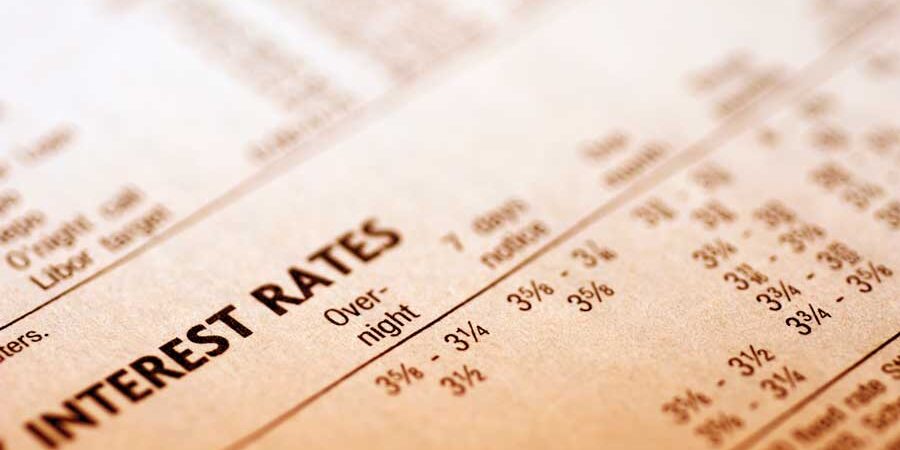A Crystal Ball Look at Interest Rates
It’s no secret that interest rates have been at historically low levels — and not just compared to the rates your parents or grandparents got when they bought their houses. Even a brief glance at interest rates over the past 200 years shows how low they were in 2016. To give you some idea of how low the current rates are, consider this:
- In the past 200 years, interest rates averaged 5.18 percent. Averaged over so many years, that figure combines the highs and lows, peacetime and wartime, boom times and depressions. And it still works out to 5.18 percent.
- In 2016, the United States interest rate dipped below 3 percent. For a stretch during the year, the interest rate for a 15-year fixed mortgage dropped below 2.75 percent. That’s a little more than half of the 200-year average.
How Interest Rates Are Determined
Mortgage rates are a little different than the prime rate. The Federal Reserve (the Fed) sets the prime rate, which in turn determines everything from bank loan interest rates to credit card interest rates. Mortgage rates are set in part by the supply and demand of houses for sale. A larger part of the calculation involves the yield of 10-year treasury bonds, which move up and down throughout the business day, just like stocks.
In practice, the prime rate is set low to spur economic growth and set high to battle inflation. Mortgage rates, on the other hand, affect only loans you need to buy real estate. A single percentage point difference in your mortgage rate can save (or cost) you thousands of dollars over the course of your mortgage loan.
Common Misconceptions about Interest Rates
People believe that rates are set by a mysterious power. But the truth is both simpler and more complex than that. For example:
- The Fed doesn’t set the interest rate. There are other market factors that influence the mortgage interest rates.
- Low interest rates don’t last forever. In a free-market economy, change is the only constant.
- Mortgage interest deductions — a tax deduction based on your interest rate — aren’t necessary for a robust housing market. Enjoy it while you have it.
- Higher interest rates can be better for the economy at certain times.
Trumped Up Interest Rates
Donald Trump’s surprising victory in the presidential election will likely impact mortgage rates in the short term. In fact, the 10-year Treasury bond rate increased 0.3 percent in one day — the day after the election. That’s a huge jump for one day, but while mortgage rates will likely rise in the New Year, they would have risen no matter which candidate won. Economic uncertainty always forces an increase in the interest rate.
The interest rates are also tied to the stock market. When the stock market goes up, it draws investors away from the Treasury bonds, which can force interest rates up. So while candidate Trump spoke out about his belief that the Fed had kept interest rates artificially low, President Trump may argue in favor of keeping them low to further spur on the economy.
While the presidential election may temporarily impact the economic markets — and interest rates — the economy will eventually stabilize. Low interest rates will remain low for now. It’s expected that they will rise slowly over the next few years. And it has little to do with what the 45th President does.
What the Experts Say
Some mortgage experts expect 0.25 percent increases over the next year. Others say a 0.5 percent hike is already in the works. In other words, the experts disagree. If the economy responds to Trump’s policies and continues its growth, mortgage rates are sure to rise.
Looking into the crystal ball is an imperfect science. Some would just as soon shake up the Magic 8-Ball. Will the mortgage interest rates rise? “Outlook good.” In a year’s time, the rates for a 30-year fixed mortgage could be as low as 3.5 percent or as high as 4.5 percent. A 15-year fixed mortgage could have a similar range, from 3.3 to 3.8 percent. And these figures are as valid as the Magic 8-Ball’s.
Looking Ahead
Given the trends and the current market rates, it’s impossible to believe rates will continue to drop. It also seems unlikely that interest rates will remain stagnant. That leaves only one direction for rates to go: up. But if everyone is expecting an increase in mortgage rates, can anyone say how high the uptick will spike?
Most experts predict a 0.5 percent rise over the course of 2017. Then again, those same experts have been predicting a 0.5 percent rise every year since 2008. Still, the signs point to a slowly increasing rate, with as many as three small increases sometime in 2017. The takeaway is that now is the time to act. If you’re waiting to buy a home, don’t. Lock in a favorable percentage while interest rates are still low.
If you have questions about interest rates contact Zachery Adam today.
[/et_pb_text][/et_pb_column][/et_pb_row][/et_pb_section]







